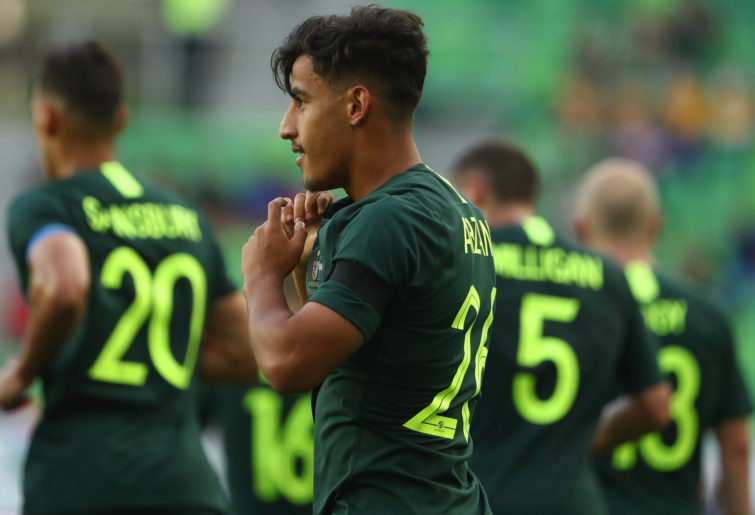After Qatar 2022, if Australia is to succeed against the best in the world, its players must be playing against the world’s best – in Europe.
Hence, the only professional football league in Australia must act as a stepping stone – or a second chance – for its players. So how can the A-League Men benefit the world game in Australia?
The fact that 14 players – including many stars – called up by Graham Arnold over the last 12 months currently play in the A-League can create an argument that there is some form of quality in the competition.
But on the other hand, why are players such as Jamie Maclaren, Marco Tilio and Craig Goodwin, players of high quality, not in Europe’s best leagues?
So, why do we look at Europe as the benchmark?
Firstly, the number of games that are played. Last year, the A-League consisted of just 26 games per team – nothing in comparison to the struggle of the English Championship, 46 games plus FA and Carabao Cup appearances. And that’s in a second division.
Every season is tough, and that is what players need to get used to if they want to improve their game.
Secondly, the atmosphere.
Don’t get me wrong, the A-League has brilliant fans, but what atmosphere is there when the competition averages 5327 people per game, compared to the Premier League, which brought in just shy of 40,000 people per game?
Why does this matter? Just ask those who’ve fallen to the pressures and the abuse by their opposition’s ‘12th man’.
And most importantly, the quality. Nothing beats the high-pressure, cutthroat environment with the best talent in the world, in Europe. You either get better, or dreams are destroyed, life in tatters.
So if the A-League shouldn’t house the best Aussie players, what role should it play in Australian football?
The first thing that comes to mind for me is that it should act as a home and second chance for players.
Remember Daniel Arzani?

(Photo by Robert Cianflone/Getty Images)
As much as playing in Europe is encouraged, he has been prone to bad luck and a recent return Down Under could have rejuvenated his career. A loan move from Manchester City to Australia would have been a better option than sending him to the Belgian second division, where even there he has significantly struggled.
Arzani has talent, and it is up to A-League clubs to support him.
It’s a win-win: his career is turned around, and anyone who has played at a World Cup has talent, so he would’ve been an exciting addition to an A-League squad.
Australian players should be encouraged by the fact that they have interest at home, if they succumb to bad luck or mismanagement.
In some cases this has worked out already. Ben Folami rejuvenated his career at Melbourne Victory, earning a Socceroos call-up, despite being released by League One team Ipswich Town.
But in other cases it hasn’t worked out. Terry Antonis and Dimitri Petratos joined WSW as reputable players who had come back to Australia after struggling overseas, only to rarely feature, especially throughout the back half of the season.
Secondly, we can look at youth development.
Australian football faces being irrelevant towards European clubs. Yes, there is an increasingly large market in Asia, but the best play in Europe, and at least for now, will play in Europe.
While quite a few players have moved to Europe from the A-League, has it been top, top teams?
Joel King was the best young player in the league as of the 2020-21 season, but no one from Europe’s top five leagues came knocking. Instead, it was relegation battling Danish team Odense who bought him.
Garang Kuol nearly scored twice against Barcelona, but there was nothing this summer to sway him from staying at CCM.
Becoming a development league is easier said than done. A large hurdle is transfer fees.
What is the point of developing an academy and risking giving young players starts when, at best, you are only looking at a six-figure fee, even if the player has stood out?
Issues right from the roots of Australian football also ring out, but that would be for another article.
But youth player development is still key, indirectly. If the Socceroos succeed on the world stage, more interest in the A-League Men will proceed. And the Socceroos can only get better with better talent and academies.
But another aspect has opened up. And that began with Daniel Penha. The Brazilian’s game was not complete, but exciting, talented, and most of all, giving it all.
While I did say the A League should give overseas Australians a second chance, excitement will surround the competition if it is just as cutthroat, intense and as hyped as Europe’s leagues.
Bringing in overseas or local players who will give it their all for their careers will be key. Lachlan Rose was brought in from NPL2 and his grit and hard work has paid off.
There is no point bringing in solid but not very well-known ageing European players, who come to Australia for the lifestyle, when there are players out there who can create headlines, hype and hope for the league.
Australian football has a long way to go.
And the two aspects of the game that will correlate with success are the national league – A-League Men – and the Socceroos.
While both coexist, it is important that the Socceroos succeed by having its squad based overseas, while shifting the current league into a more gritty, competitive and exciting league, with chances for Australian players who are starting their careers, or have struggles in the tough European environment.





























































































